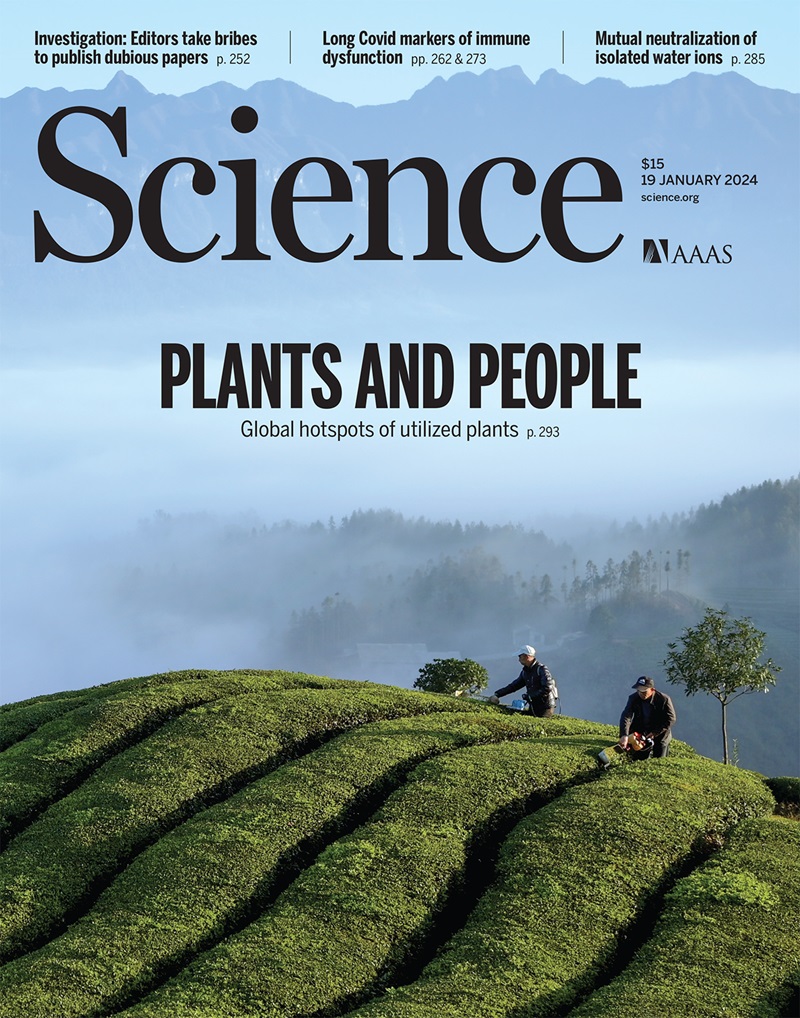细胞内蛋白编辑使内源性蛋白中的非规范残基得以整合
IF 45.8
1区 综合性期刊
Q1 MULTIDISCIPLINARY SCIENCES
Science
Pub Date : 2025-05-01
引用次数: 0
摘要
在其原生细胞环境中研究蛋白质的能力对我们对生物学的理解至关重要。在这项工作中,我们报告了一种细胞内蛋白质编辑技术,从分裂间质介导的蛋白质剪接、遗传密码扩增和内源性蛋白质标记中提取蛋白质。这种方法使我们能够快速和特定位置地将残留物和化学手柄安装到蛋白质中。我们展示了这个平台编辑细胞蛋白、插入表位、蛋白质特异性序列和非规范氨基酸的能力。值得注意的是,我们使用内源性标记方法将我们的蛋白质编辑技术应用于最小扰动的内源性蛋白质。我们期望在这项工作中提出的蛋白质编辑技术将应用于哺乳动物活细胞中的各种问题和现象。本文章由计算机程序翻译,如有差异,请以英文原文为准。

Intracellular protein editing enables incorporation of noncanonical residues in endogenous proteins
The ability to study proteins in their native cellular context is crucial to our understanding of biology. In this work, we report a technology for intracellular protein editing, drawing from split intein–mediated protein splicing, genetic code expansion, and endogenous protein tagging. This approach enables us to rapidly and site-specifically install residues and chemical handles into a protein. We demonstrate the power of this platform to edit cellular proteins, inserting epitopes, protein-specific sequences, and noncanonical amino acids. Notably, we use an endogenous tagging approach to apply our protein editing technology to endogenous proteins with minimal perturbation. We anticipate that the protein editing technology presented in this work will be applied to a diverse set of problems and phenomena in live mammalian cells.
求助全文
通过发布文献求助,成功后即可免费获取论文全文。
去求助
来源期刊

Science
综合性期刊-综合性期刊
CiteScore
61.10
自引率
0.90%
发文量
0
审稿时长
2.1 months
期刊介绍:
Science is a leading outlet for scientific news, commentary, and cutting-edge research. Through its print and online incarnations, Science reaches an estimated worldwide readership of more than one million. Science’s authorship is global too, and its articles consistently rank among the world's most cited research.
Science serves as a forum for discussion of important issues related to the advancement of science by publishing material on which a consensus has been reached as well as including the presentation of minority or conflicting points of view. Accordingly, all articles published in Science—including editorials, news and comment, and book reviews—are signed and reflect the individual views of the authors and not official points of view adopted by AAAS or the institutions with which the authors are affiliated.
Science seeks to publish those papers that are most influential in their fields or across fields and that will significantly advance scientific understanding. Selected papers should present novel and broadly important data, syntheses, or concepts. They should merit recognition by the wider scientific community and general public provided by publication in Science, beyond that provided by specialty journals. Science welcomes submissions from all fields of science and from any source. The editors are committed to the prompt evaluation and publication of submitted papers while upholding high standards that support reproducibility of published research. Science is published weekly; selected papers are published online ahead of print.
 求助内容:
求助内容: 应助结果提醒方式:
应助结果提醒方式:


